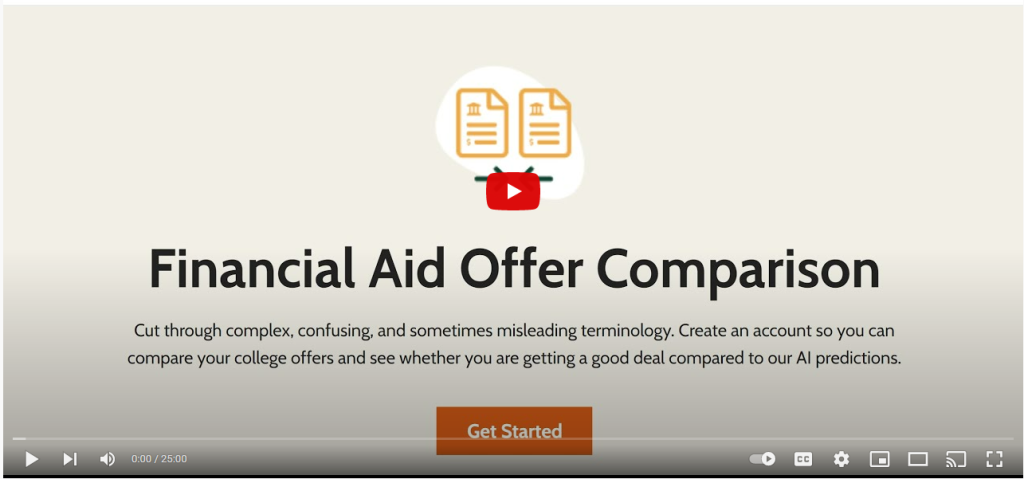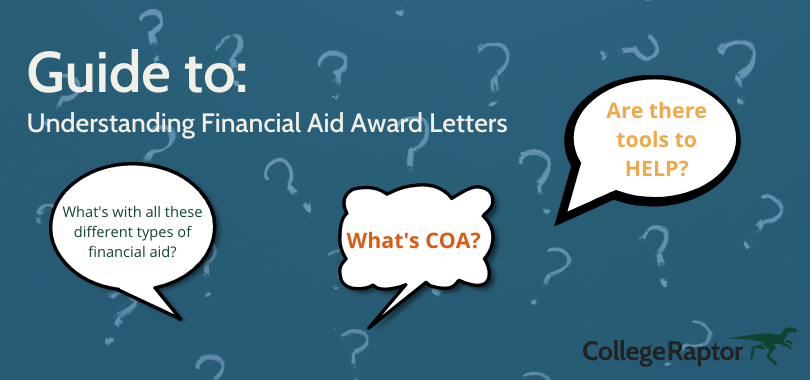Most colleges sent out financial aid award letters about 1 – 3 months after receiving your FAFSA information. But this is not a hard and fast rule. The timeline for sending award letters for financial aid may vary among schools. Understanding the process will give you a better idea of when to expect your financial aid award letter.
What Is An Award Letter For Financial Aid?
A financial aid award letter is a letter sent out by schools to all students whose applications they’ve accepted. This letter includes information on how much it will cost to attend their school. It also includes a detailed breakdown of how much financial aid the student is eligible to receive.
Only students who have filed the FAFSA (Free Application for Federal Student Aid) and who are admitted will receive financial aid award letters. Those who don’t submit the FAFSA will not receive these letters. Those who are not admitted won’t receive these letters either.
Here’s how it works:
When you file the FAFSA, the federal Department of Education sends it out to all the schools listed on the application. Schools evaluate your application independently. If they accept your application, they use the information on the FAFSA to calculate your financial aid eligibility. They then send you a financial aid award letter with details of the cost to attend their school and your financial aid eligibility.

So, When Can I Expect To Receive My Financial Aid Award Letter?
There’s no set date on which all schools send out their financial aid award letters to admitted students. Generally, most schools send financial aid letters along with or around the same time that they send out their admission offer letters.
If you’ve applied for Regular Decision, you can expect to receive your financial aid award letter around March-April. Remember this can vary considerably from one school to another. Several factors can impact the timeline for receiving your award letter for financial aid.
For example, the date you submitted your FAFSA could impact when you receive your award letter. The earlier you submit the application, the earlier you should receive your financial aid award letter. Submitting the FAFSA later in the cycle could result in you receiving the letter later.
The number of FAFSA applications the school receives can also impact when you get your financial aid award letter. It takes time for a college to process each FAFSA and calculate each admitted student’s eligibility for financial aid. The more FAFSAs they receive, the longer it may take for the school to send out your letter.
If you need to know the exact timeline in order to plan your finances, check your school’s website. Most schools publish dates and deadlines regarding financial aid applications. If you don’t find this information on the website, call the school’s financial aid office. They will definitely be able to help you out.
Timeline For Financial Aid Award Letters Is Different For Early Decision Applicants
Colleges process Early Decision applications separately from Regular Decision applications. If you applied for Early Decision, you can expect to receive your financial aid award letter around mid-December. It will arrive along with your offer of admission.
The advantage of applying for Early Decision is that you know the cost of attendance as well as your financial aid eligibility well in advance. This gives you plenty of time to arrange the necessary finances to fill the funding gap. The downside is that you won’t be able to compare financial award letters from different colleges.
How To Read Your Financial Aid Award Letter
Financial aid award letters are not easy to read. They contain a lot of terms, conditions, inclusions, exclusions, and other minute details. Each of these affects the total amount of financial aid you actually receive. It also affects what you can use the funds for.
What makes it even more difficult is that there is no standard format for writing a financial aid award letter. The format and terminology can vary considerably from one college to another. If you’re not sure about something in your letter, the best thing to do is to call the school’s financial aid office and get a clarification directly.
These are some of the more basic terms that all financial aid award letters will include:
- Cost of attendance (COA) – This is an estimate of the cost of tuition and fees, room and board, books, school supplies, transportation, and other potential college costs.
- Grants – Grants are offered by the federal government based on the student’s demonstrated financial need. This is a form of free financial aid that you do not need to return.
- Scholarships – Scholarships are another form of free financial aid. They are based on merit and may be offered by the federal government and the school. You don’t need to return any money you receive through scholarship awards provided you comply with the scholarship terms.
- Federal Loans – These are funds that the federal government loans to college students. You have to return whatever money you borrow with interest. The federal government offers different types of student loans, each with different terms, conditions, and interest rates.
- Work-Study – Work-study gives you the opportunity to earn a part-time income while you study. Work-study is generally limited to 20 hours a week and often involves working on the campus itself.
- Expected Family Contribution – EFC refers to the amount of money your family is expected to contribute to your college education. This is calculated based on the family income information you submitted on the FAFSA. If you don’t have the funds to cover this amount, you may need to take out a private student load.
You’ve Received Your Financial Aid Award Letter – What Next?
You may receive multiple financial aid award letters depending on which schools have accepted your application. After receiving each letter, you must take time to read it in detail. Make a note of the different types of financial aid you’ve been offered and exactly what’s included and what’s excluded. Calculate how much money you’ll need to pay from your personal savings.
Do this for each of the financial aid award letters you receive. This will allow you to compare the financial aid that different schools are offering you. This will allow you to make a more informed decision about which school offer you should accept based on the cost of attendance. Don’t hesitate to contact the school’s financial aid offer if you need clarifications on any of the terms in the letter.
What’s If The Financial Aid Is Not Enough To Cover Your College Costs
This happens more often than you may think. College tuition is expensive. It’s very rare that financial aid is enough to cover the total cost of attendance. This means you’ll have to put in some money of your own. If this amount is absolutely unaffordable for you. you can appeal your financial aid package.
This involves writing an appeal letter to the school’s financial aid office requesting additional aid based on your family’s financial circumstances. The school may request you submit supporting documentation. Most schools do consider requests for additional aid if they have funds left over from their allotment for the year.
If the aid is not enough, another option is to keep searching and applying for scholarships. Scholarship opportunities are available year-round and are a great way to fill the funding gap. Winning even small scholarship awards throughout the year can help lower your total student loan debt.
The last option is to take a private student loan. These have a higher rate of interest as compared to federal student loans. The key is to borrow only as much as you need and no more. This will help you achieve your higher education goals while still keeping down the total amount of student loan debt that you take on.
Are you looking for student loans? Use College Raptor’s free Student Loan Finder to compare lenders and interest rates side by side!
| Lender | Rates (APR) | Eligibility | |
|---|---|---|---|
 |
5.50%-16.12%* Variable
3.99%-15.61%* Fixed
|
Undergraduate and Graduate
|
VISIT CITIZENS |
 |
5.54% - 15.70% Variable
3.99% - 15.49% Fixed
|
Undergraduate and Graduate
|
VISIT SALLIE MAE |
 |
4.63% - 17.99% Variable
3.49% - 17.99% Fixed
|
Undergraduate and Graduate
|
VISIT CREDIBLE |
 |
6.00% - 13.75% Variable
3.99% - 13.75% Fixed
|
Undergraduate and Graduate
|
VISIT LENDKEY |
 |
5.66% - 14.72% Variable
3.69% - 14.56% Fixed
|
Undergraduate and Graduate
|
VISIT ASCENT |
 |
3.70% - 8.75% Fixed
|
Undergraduate and Graduate
|
VISIT ISL |
 |
5.62% - 16.85% Variable
3.69% - 16.49% Fixed
|
Undergraduate and Graduate
|
VISIT EARNEST |
 |
5.00% - 14.22% Variable
3.69% - 14.22% Fixed
|
Undergraduate and Graduate
|
VISIT ELFI |






